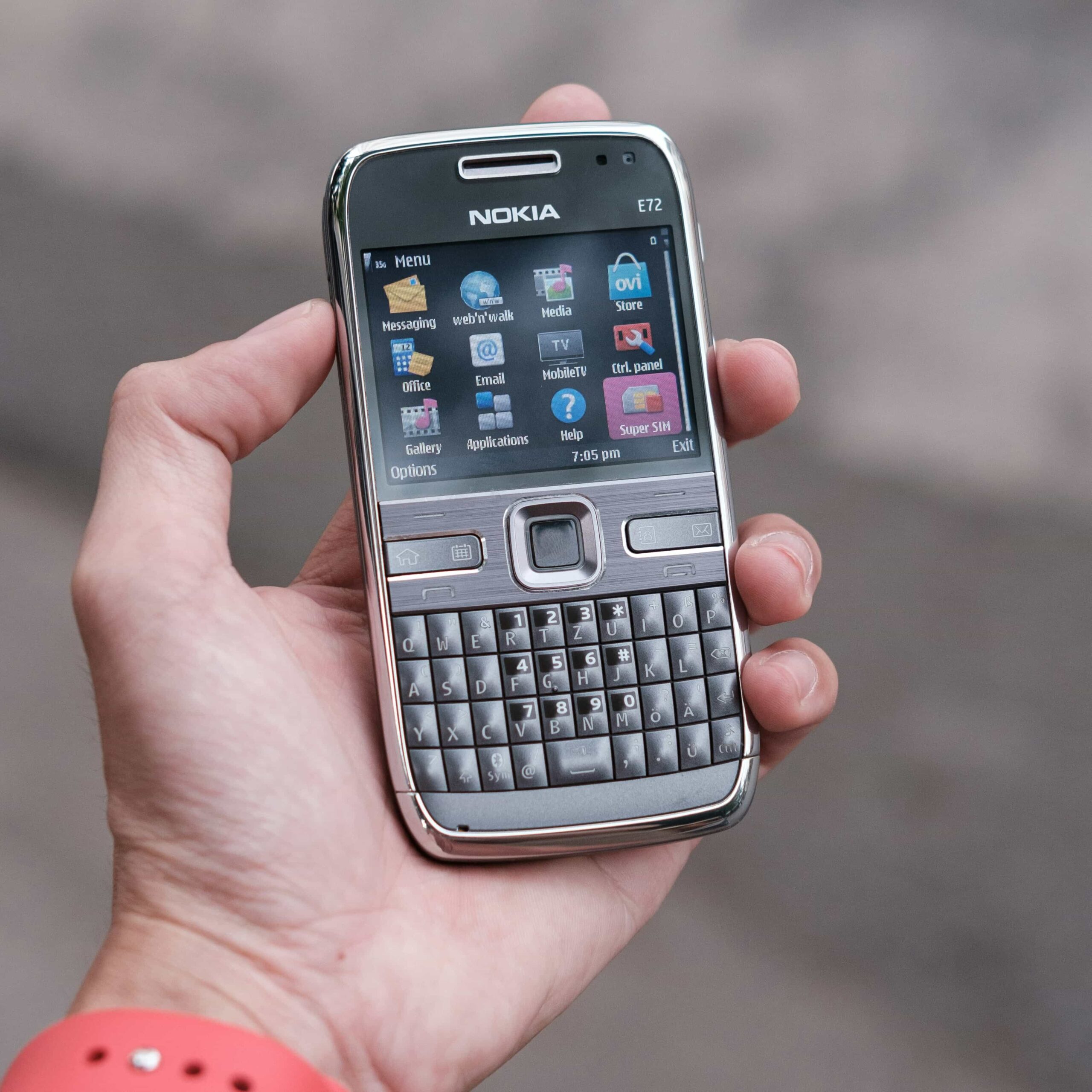Nokia’s Finnish Origins and Finland’s Business Success Stories
I still remember the satisfying thunk of my first Nokia 3310 hitting the pavement after I accidentally dropped it down a flight of stairs. The thing didn’t even have a scratch. That durability—that almost legendary toughness—wasn’t just a happy accident. It was the result of over a century of Finnish engineering excellence, rooted in a business culture that values resilience, innovation, and long-term thinking.
But here’s what really gets me excited about Nokia’s story: it’s not just about one company’s journey from a paper mill to a global technology giant. It’s a fascinating window into how Finland transformed itself from a resource-based economy into one of the world’s most innovative business ecosystems. And trust me, having studied Nordic business models for years, the Finnish approach offers lessons that go way beyond just building indestructible phones.
Finland Fast Facts
Finland consistently ranks among the world’s top 3 most innovative countries according to the Global Innovation Index1. With a population of just 5.5 million, Finland has produced more technology unicorns per capita than almost any other nation, including companies like Supercell (valued at $10.2 billion) and Rovio Entertainment (creators of Angry Birds).
From Paper Mills to Pioneering Technology
Nokia’s story begins in 1865—not with circuit boards and wireless signals, but with wood pulp and paper machinery. Fredrik Idestam established his paper mill in Tampere, Finland, during a period when the country was still a Grand Duchy under Russian rule. What strikes me most about this origin story is how it perfectly encapsulates the Finnish approach to business: start with what you have, build systematically, and never be afraid to pivot when opportunities arise.
The company’s early decades were marked by diversification that would make modern business consultants nervous. By the 1960s, Nokia had expanded into rubber boots, car tires, and even toilet paper2. I know, I know—this sounds like the corporate equivalent of throwing spaghetti at the wall to see what sticks. But actually, this reflects something deeper about Finnish business culture: the willingness to experiment and adapt based on market conditions rather than rigid adherence to a single vision.
“The Finnish way of doing business is fundamentally different from the American model. We think in decades, not quarters. We build for durability, not disposability.”
The real transformation began in the 1980s when Nokia started focusing on telecommunications. This wasn’t just a lucky guess—it was strategic positioning based on Finland’s unique geographic and political situation. Being sandwiched between Soviet Russia and Western Europe meant Finland had to develop robust communication systems. The government invested heavily in telecommunications infrastructure, creating a perfect testing ground for Nokia’s innovations3.
What really fascinates me is how Nokia’s early mobile phones reflected distinctly Finnish values. Remember those brick-sized phones from the late 1980s? They weren’t trying to be sleek or fashionable—they were built to work reliably in harsh Nordic conditions. Finnish winters don’t mess around, and neither did Nokia’s engineering teams. This focus on functionality over flash would later become Nokia’s calling card in the global mobile market.
The Rise of a Mobile Empire
Let me paint you a picture of the mobile phone landscape in the late 1990s. If you walked into any electronics store, you’d be faced with a bewildering array of devices from Motorola, Ericsson, and various other manufacturers. But increasingly, people were reaching for those distinctive Nokia phones. And honestly? I was one of them.
My Nokia 8210 was my gateway drug into mobile technology. Looking back, what impressed me wasn’t just the phone itself—it was the entire ecosystem Nokia had built around it. The Snake game, the customizable ringtones, the seemingly endless battery life. This wasn’t just about communication; Nokia had created a platform for mobile entertainment and personalization years before anyone was talking about “smartphones.”
Nokia’s Market Dominance by the Numbers
At its peak in 2007, Nokia controlled an astounding 40% of the global mobile phone market4. The company sold over 468 million phones that year alone, generating revenues of €51.1 billion. To put this in perspective, Nokia’s mobile phone division was larger than many entire national economies.
But here’s where the story gets really interesting—and where I think Nokia’s Finnish origins become crucial to understanding both their success and their eventual struggles. The company’s approach to innovation was deeply rooted in Finnish engineering culture, which prioritizes incremental improvement and rock-solid reliability over flashy breakthroughs.
This worked brilliantly in the early mobile era. While competitors were rushing to add features that didn’t quite work properly, Nokia was perfecting the fundamentals. Their phones had better battery life, clearer call quality, and—as anyone who owned one will tell you—virtually indestructible build quality. I’ve heard stories (probably apocryphal, but who cares?) about Nokia phones surviving house fires and car accidents with minimal damage.
| Year | Global Market Share | Revenue (€ billions) | Key Product Launch |
|---|---|---|---|
| 2000 | 30.6% | 30.4 | Nokia 3310 |
| 2003 | 34.9% | 29.5 | Nokia 1100 |
| 2007 | 40.0% | 51.1 | Nokia N95 |
| 2010 | 28.9% | 42.4 | Nokia C3 |
The irony, of course, is that this very strength became Nokia’s weakness when the smartphone revolution hit. While Apple was reimagining what a mobile device could be, Nokia was still thinking in terms of incremental improvements to existing technology. The iPhone launch in 2007 was a classic example of disruption theory in action—Nokia didn’t lose because they made bad phones, they lost because they were making the wrong kind of phones entirely5.
What’s particularly fascinating from a Finnish business perspective is how Nokia’s decline reflected broader challenges in the country’s business culture. Finnish companies excel at engineering excellence and long-term planning, but they can struggle with rapid market pivots and aggressive risk-taking. It’s not a criticism—it’s just a different approach to business that works brilliantly in some contexts and less well in others.
But here’s the thing that really gets me: Nokia’s story didn’t end with the smartphone debacle. The company sold its mobile division to Microsoft in 2014, but it reinvented itself as a network infrastructure provider. Today, Nokia is a key player in 5G development, working with telecom operators worldwide to build next-generation networks6. That’s the Finnish approach in a nutshell—adapt, persist, and find new ways to leverage your core strengths.

Finland’s Broader Business Ecosystem
Nokia’s success wasn’t an isolated phenomenon—it was part of a broader transformation of Finnish business culture that began in the 1980s and continues today. And let me tell you, having visited Helsinki several times for business conferences, the energy in Finland’s tech scene is absolutely electric. There’s this unique combination of Nordic pragmatism and entrepreneurial ambition that creates something really special.
Take Rovio Entertainment, for example. Most people know them as the creators of Angry Birds, but what struck me during a presentation by their CEO was how they approached game development. Like Nokia before them, Rovio focused on creating something that worked perfectly rather than rushing to market with half-baked concepts. The original Angry Birds was Rovio’s 52nd game attempt7. That’s persistence rooted in Finnish business culture—keep iterating until you get it right.
Finnish Gaming Industry Success
Finland’s gaming industry generated over €2.4 billion in revenue in 2022, with companies like Supercell (Clash of Clans), Rovio (Angry Birds), and Remedy Entertainment (Control, Alan Wake) leading the charge8. The country produces more gaming revenue per capita than any other nation globally.
Then there’s Supercell, which honestly blew my mind when I first learned about their business model. They’re based in Helsinki, employ fewer than 400 people, yet generate billions in revenue annually. Their approach to game development is quintessentially Finnish: small teams, high autonomy, and a focus on creating games that people actually want to play for years rather than quick cash grabs.
But Finnish business success extends far beyond technology. The forestry industry, which provided Nokia’s original foundation, remains a global powerhouse. Companies like UPM-Kymmene and Stora Enso have transformed themselves from traditional paper producers into innovative biomaterials companies9. What fascinates me is how these companies are applying the same long-term thinking that made Nokia successful to completely different challenges like sustainable packaging and renewable chemicals.
- Kone Corporation: Global leader in elevator and escalator manufacturing, known for innovative eco-efficient solutions
- Wärtsilä: Marine and energy solutions provider focusing on sustainable technology and lifecycle performance
- Outokumpu: Advanced stainless steel manufacturer with industry-leading sustainability practices
- Neste: Renewable fuels producer that has become Europe’s largest refiner by market value
Here’s what really strikes me about Finnish business culture: there’s this underlying assumption that you’re building something that will last. It’s not about quick exits or rapid scaling—it’s about creating sustainable value. I remember talking to a Finnish entrepreneur who told me, “We don’t build companies to flip them in five years. We build them to employ our grandchildren.”
“Finnish companies don’t typically chase short-term profits. We invest in R&D, we invest in our people, and we think about what the world will need in twenty years, not just what it wants today.”
The educational system plays a huge role in this. Finland consistently ranks among the world’s top education systems, and there’s a strong emphasis on technical education and problem-solving skills10. This creates a workforce that’s naturally inclined toward engineering excellence and systematic thinking—exactly the qualities that made Nokia successful and continue to drive Finnish business innovation today.
What’s particularly interesting is how Finnish companies approach internationalization. Unlike American companies that often try to replicate their domestic success globally, Finnish companies tend to adapt their offerings to local markets while maintaining their core engineering and quality standards. It’s a more nuanced approach that requires patience and cultural sensitivity, but it often results in more sustainable international success.
The Modern Finnish Business Landscape
So where does this leave Finland’s business ecosystem today? Well, I’ll be honest—I’m more optimistic about Finland’s economic future than I’ve been in years. The country has successfully navigated the post-Nokia transition and emerged with a more diversified, resilient economy. The startup scene in Helsinki is thriving, with companies like Wolt (acquired by DoorDash for €7 billion) and Zalando showing that Finnish entrepreneurs can compete globally11.
But here’s what really excites me: Finnish companies are leading the charge in sustainability and circular economy solutions. Given the country’s natural resources and environmental awareness, this feels like a natural evolution of Finnish business culture. Companies like Neste have transformed from traditional oil refiners into renewable fuel pioneers, while forestry companies are developing new biomaterials that could replace plastics in packaging applications.
Finland’s Startup Ecosystem Today
Finland ranks 6th globally in startup ecosystem performance according to the Global Startup Ecosystem Report 202312. The country has produced 5 unicorn companies (startups valued over $1 billion) in the past decade, with a combined valuation exceeding $25 billion.
The lessons from Nokia’s journey—both its successes and failures—are deeply embedded in how Finnish companies approach business today. There’s still that focus on engineering excellence and long-term thinking, but now it’s combined with greater market awareness and agility. Companies like Oura (the health ring manufacturer) and Varjo (VR/AR technology) represent this new generation of Finnish firms that maintain traditional strengths while embracing rapid innovation cycles13.
- Sustainability focus: Finnish companies are increasingly building environmental considerations into their core business models
- Global mindset: Even early-stage startups are thinking internationally from day one
- Technology integration: Traditional industries are embracing digital transformation and AI applications
- Talent retention: Government policies and company culture work together to keep skilled workers in Finland
What strikes me most about contemporary Finnish business is how companies are balancing rapid growth with sustainable practices. It’s not just about scaling fast—it’s about scaling responsibly. This approach might seem slower than Silicon Valley’s “move fast and break things” mentality, but I think it’s actually more sustainable in the long run.
Looking ahead, I see Finland continuing to leverage its traditional strengths—engineering excellence, educational quality, and environmental consciousness—while adapting to new technological and economic realities. The Nokia story teaches us that even the most successful companies must evolve or risk obsolescence, but it also shows that with the right approach, countries and companies can reinvent themselves and emerge stronger.
References



